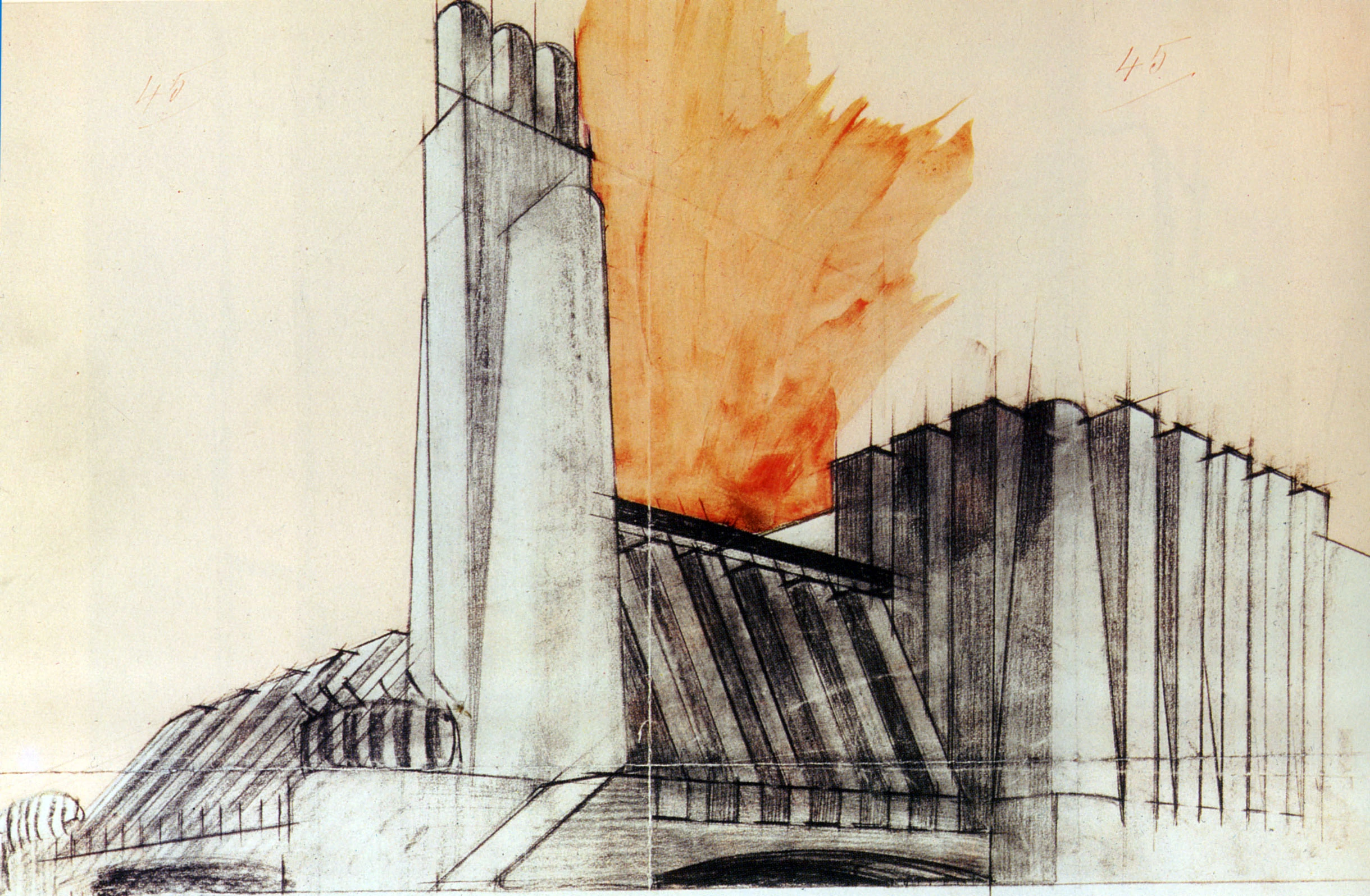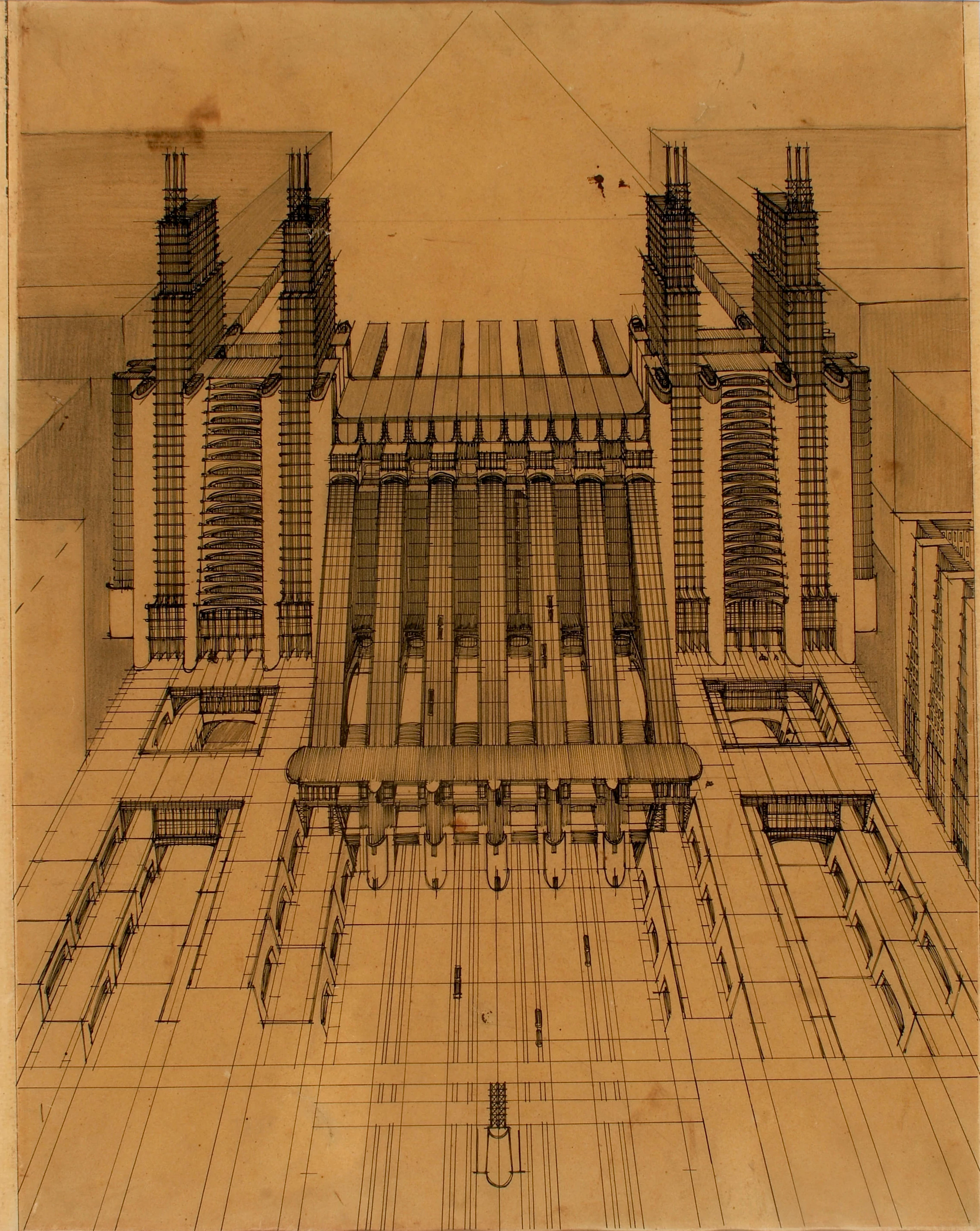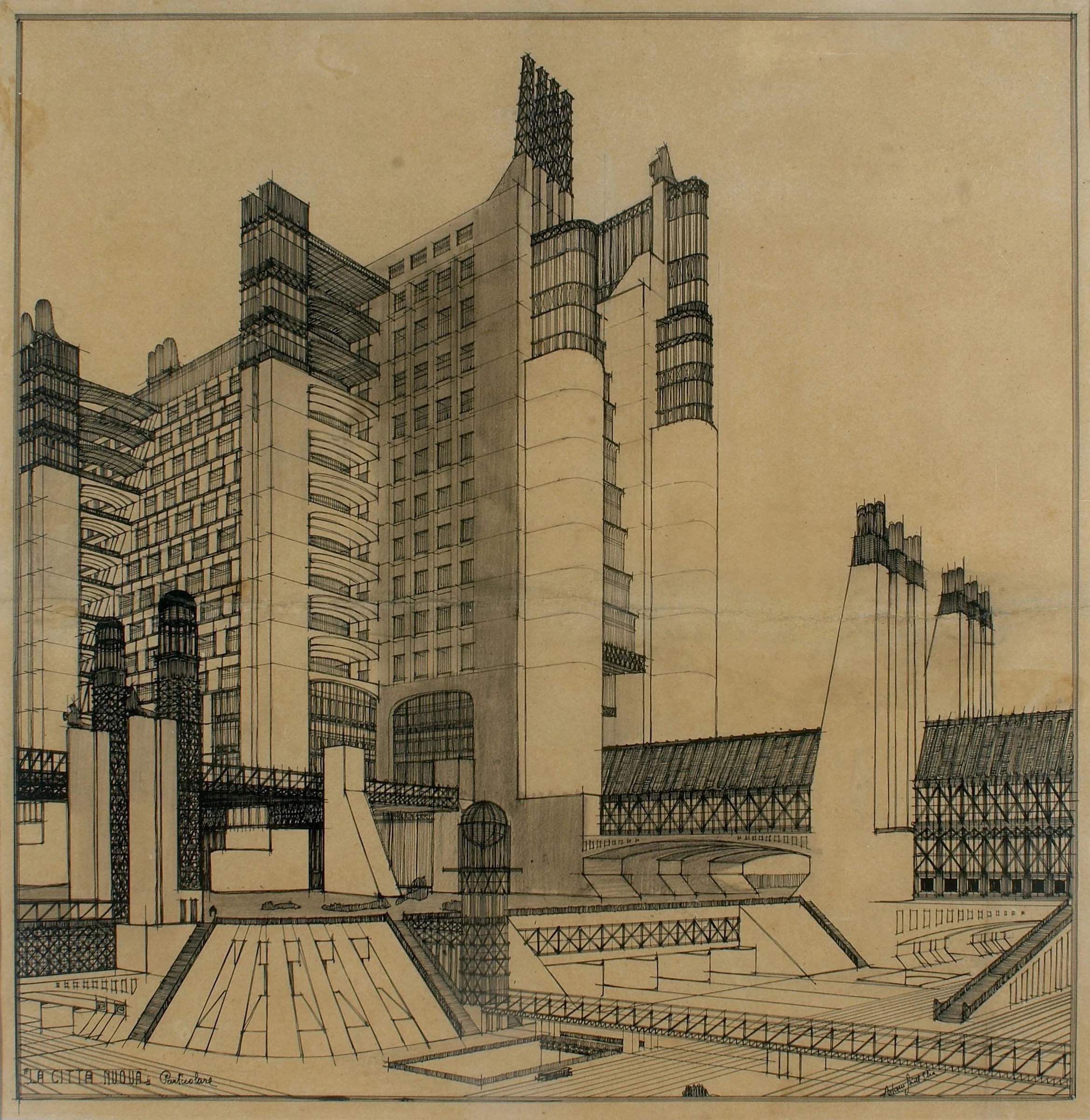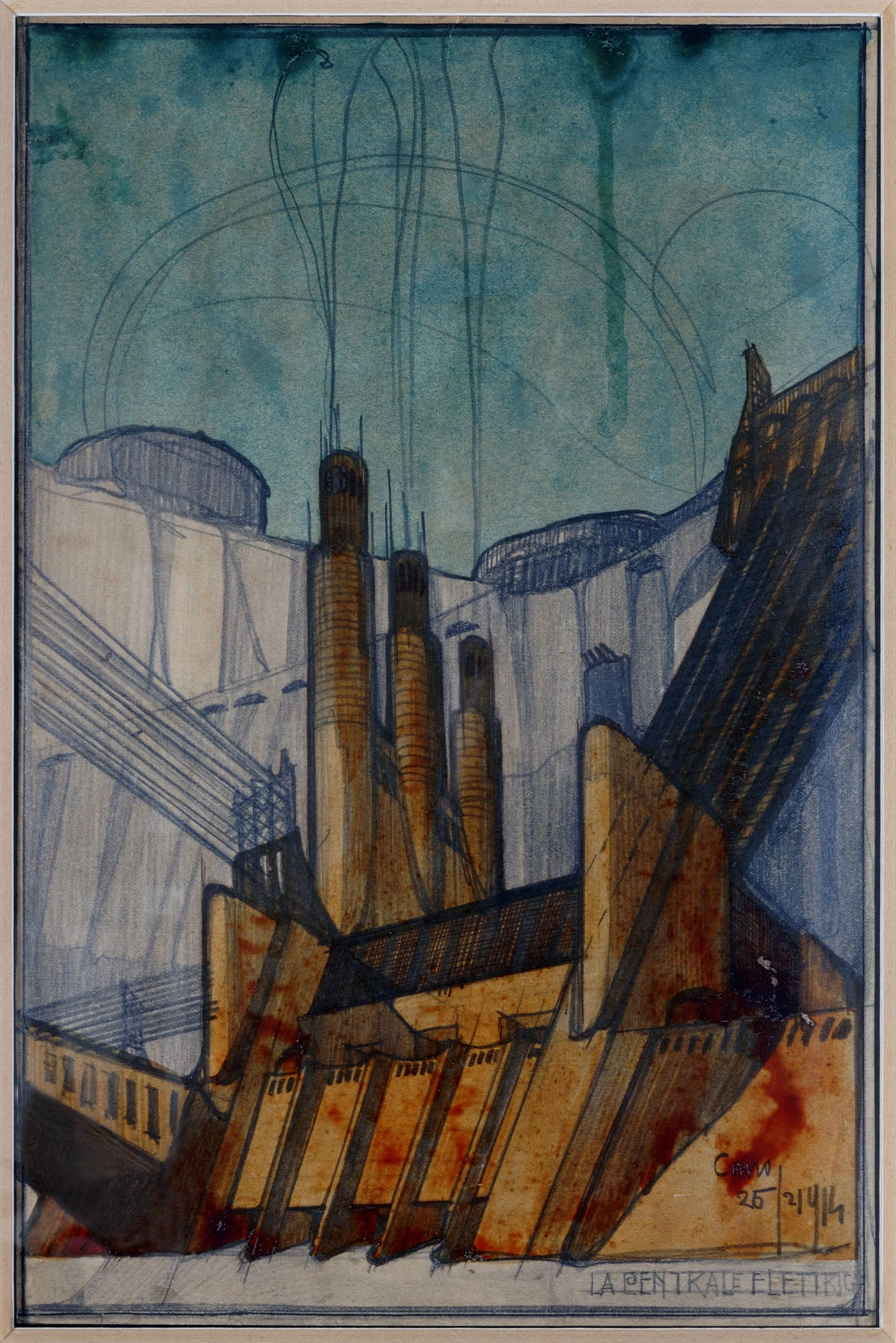Antonio Sant’Elia lived the quintessential futurist life: short, violent and driven by an all-consuming desire to remake the world. He was born in 1888 in Como, Lombardy, and at age 19 became a draftsman. In the next nine years he created dozens of architectural drawings and schematics illustrating a Città Nuova, the ‘New City’ and penned the Manifesto of Futurist Architecture. Sant’Elia was killed in the Eighth Battle of the Isonzo, in World War 1, cutting short his industrial vision of modern life.
Sant’Elia’s drawings establish a monumental scale: towering, interconnected urban plinths that hum with energy. As with many of the futurist and expressionist architects at the turn of the century, most of Sant’Elia’s designs were ever built. But his visions appear in science fiction films like Fritz Lang’s Metropolis, Ridley Scott’s Bladerunner, and the sweeping worlds of the Halo games, and take physical form in the functional architecture of modern power plants and hydroelectric dams.


Just as the ancients drew inspiration for their art from the elements of nature, we—who are materially and spiritually artificial—must find that inspiration in the elements of the utterly new mechanical world we have created.



